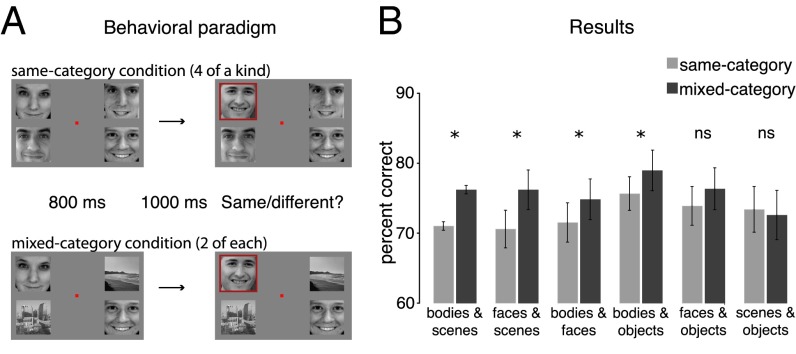Fig. 1.
(A) Behavioral paradigm. Participants were shown two successively presented displays with four items in each display (Materials and Methods). On the second display, one item was cued (red frame) and participants reported if that item had changed. In the same-category condition, items came from the same stimulus category (e.g., four faces or four scenes). In the mixed-category conditions, items came from two different categories (e.g., two faces and two scenes). (B) Behavioral experiment results. Same-category (light gray) and mixed-category (dark gray) performance is plotted in terms of percent correct for all possible category pairings. Error bars reflect within-subject SEM (48) (*P < 0.05).

